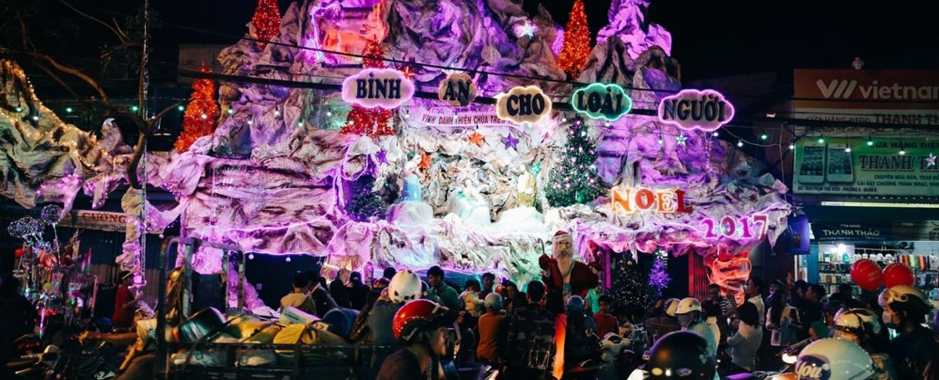Ho Chi Minh city, Vietnam: Nguyen Pham Lam Phuong
- mediaisc66
- Jul 30, 2018
- 2 min read
I am from Ho Chi Minh city, Vietnam. It was previously called Saigon and now many people still prefer calling it that way. Adjectives often used to describe the city: dynamic, sleepless, young, noisy, too many motorbikes, hot and humid, ever-changing BUT also chill, lay-back, mysterious and full of history. Nowadays if you come to HCM city, everything you see will lead you to think that this city is so dynamic, always changing and young! But if you get yourself some time to find out more about the city, you’ll see behind every corner, every street, sidewalk or food vendor hides its own story. Saigon was nicknamed “pearl of the Far East” during French colonial time and it’s now the home of many many people from all over Vietnam coming in to find a job, set up a career, or generally look for a better life. The people of Saigon are famous for being relaxed, generous and open-minded/hearted. My history teacher once told me that “It is the good weather in the South and the rich soil of the Mekong Delta that help the crops and many vegetables here grow fruitfully. The Southerners therefore rarely have to worry about food or their survival, because they have so much food and there are barely any natural disasters here. That’s why they become very relaxed and generous.” People would often regard Saigon as a multi-provincial (within Vietnam), multi-ethnic and multi-national city. Indeed, it is! If you don’t trust me, I’ll run this sample list for you – this list is a general description, but of course there’re always exceptions and changes. Ok, so there’re 24 districts in Saigon. In district 1 you can find the remnants of French colonial power: the city’s theater, the city’s zoo, the old shopping/commercial street (still one today, except it’s now called Dong Khoi), the city’s municipality building, Notre-Dame Cathedral of Saigon, the Independence Palace. District 2 and 7 are newly-renovated areas with many cute cafes, restaurants, shopping centers and international schools – many people from the West live in these areas. Interestingly, district 7 is also the home to many Korean expatriates. District 5 is the so-called Cho Lon. This area is predominantly inhabited by the Hoa population, one of the ethnic minority groups in Vietnam. The Hoa people are descendants of Chinese people coming to Vietnam for business and eventually settling here. District 8 has the biggest Christian population. District 9 is the home to many “floating lives”, meaning factory workers and university students from different regions of Vietnam. District 10 has the biggest Cambodian-origin population, with a note-worthy Cambodian market filled with delicious Cambodian foods. I know I haven’t finished listing 24 districts – but you get the idea. And even if I want to, I wouldn’t be able to because there are so many. As I also mentioned earlier, there are always exceptions and changes, especially in this era when people have so many new tools and means to meet, mix, merge and exchange! All in all, Saigon is not a place which you can really know in a flash because of its diversity and its mix between past-present-future. So if you come to Saigon, make sure to give it (and yourself) a well-deserved period of time.






![[Humans of ISC67] Participant Edition: Fumie Miura](https://static.wixstatic.com/media/b1c3cd_53599e2971094969b1f41a81fa4f45a6~mv2.jpeg/v1/fill/w_750,h_1000,al_c,q_85,enc_avif,quality_auto/b1c3cd_53599e2971094969b1f41a81fa4f45a6~mv2.jpeg)
![[Humans of ISC67] Participant Edition: Kazumi Eguchi](https://static.wixstatic.com/media/b1c3cd_2e125076734d4ace9ac2469752c41288~mv2.jpg/v1/fill/w_980,h_934,al_c,q_85,usm_0.66_1.00_0.01,enc_avif,quality_auto/b1c3cd_2e125076734d4ace9ac2469752c41288~mv2.jpg)
![[Humans of ISC67] Participant Edition: Howie Ge](https://static.wixstatic.com/media/b1c3cd_c9a8aa2970ba408abce659d3c3904410~mv2.jpeg/v1/fill/w_980,h_819,al_c,q_85,usm_0.66_1.00_0.01,enc_avif,quality_auto/b1c3cd_c9a8aa2970ba408abce659d3c3904410~mv2.jpeg)
Comments